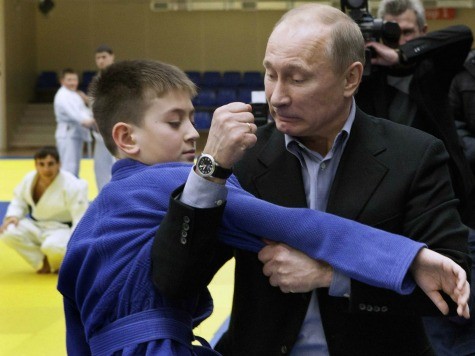
When Ukraine’s interim president went to the United States begging for weapons and munitions so his country could defend itself, he was turned down and offered ready to eat meals instead.
America’s decision to send 125 combat troops to the NATO front line states of Poland and Lithuania is being hailed as the toughest, boldest move yet taken by President Obama in response to Russia’s occupation and annexation of Crimea and recent steps to destabilise the rest of Ukraine.
When measured against Obama’s imposition of an arms embargo– not against the Russian aggressor– but rather against the Ukrainian victim of Russian aggression, Wednesday’s announcement was indeed small step in the right direction– but a very small step indeed.
What those 125 men are thought capable of doing to stop or deter the 40,000 Russian troops massed on the Ukrainian border is anyone’s guess. If the objective was to get Putin’s attention, more obvious steps might have included — and might still include— holding serious air, ground and naval exercises with NATO members, or perhaps freezing the recent START treaty, passed over harsh objections in 2010 for giving Russia a 10-1 advantage over the United States in tactical and theatre nuclear weapons.
While the US is cutting defence spending by more than $1 trillion over the next decade, Russia has nearly doubled its own defence budget in the last decade. But all of this may well be missing the bigger, broader point entirely.
Russia’s problems are far deeper than we seem to realise and Putin’s strategy for confronting those problems may be far more robust than anyone in the West seems capable of contemplating. Russia’s prime problem is not economic. It is demographic. Today, the blunt truth is that there are not enough Russians inside Russia’s current borders to keep Russia Russian for much longer.
With current population and life expectancy rates inside Russia’s current borders, even the most cautious demographers predict Russia could be a majority Muslim state by 2075. Others predict that Russia could become Russia-stan much sooner, in as little as 30 years.
When the Soviet Union dissolved in 1991, the Russian Federation had 153 million people. Today, the Russian Federation has only about 141 million people. Today, 77 of Russia’s 89 federal regions are experiencing active population decline; while only 12 of Russia’s federal regions are experiencing active population growth. Curiously, 77 of Russia’s 89 federal regions just so happen to have non-Muslim majorities, while 12 of Russia’s 89 federal regions just so happen to have Muslim majorities.
Every single one of Russia’s 12 federal regions with Muslim majorities have rapidly growing populations, while every single one of Russia’s 77 non-Muslim majority regions have rapidly shrinking populations. It isn’t just non-Muslim Russian birth rates which are nearing terminal decline, the country’s death rates are climbing, its life expectancy is plummeting and its social problems exploding. Russia’s already sub standard Third World health care system is now in terminal collapse as Russia faces massive third world style health pandemics. Cholera, typhus, and tuberculosis — diseases all but eradicated in the west and most of Asia are thriving in Russia. Meanwhile, Russia is fighting endless Islamic separatist insurgencies throughout in its south and east.
The battle with Ukraine isn’t about land. Russia doesn’t need more land. It needs more Russians to live on the land Russia already has. Putin’s gambit is to get as many Russians who now live outside Russia’s borders back inside them as he possibly can.
More than 80 percent of Russia’s resources are to be found in the part of its country with the fewest of its people. The only resource that resource-rich Russia lacks are Russians. Russia’s border with China stretches more than 2000 miles; next to the one the US shares with Canada, it is the longest border in the world. Within 2000 miles of the Russian side of the Sino-Russian border live 15 million Russians. Within 2000 miles of the Chinese side of the Sino-Russian border live 1.2 billion Chinese. Russia’s real border problem is in the east. In the west Russia sees not a problem with its borders but an opportunity.
How will a Russia in demographic meltdown be able to maintain its control over its eastern territories against a burgeoning and increasingly powerful Chinese neighbour more than ten times its size? That question must keep Putin up at night. Importing Russians from the west may be one of the ways he is trying to answer that question.

COMMENTS
Please let us know if you're having issues with commenting.